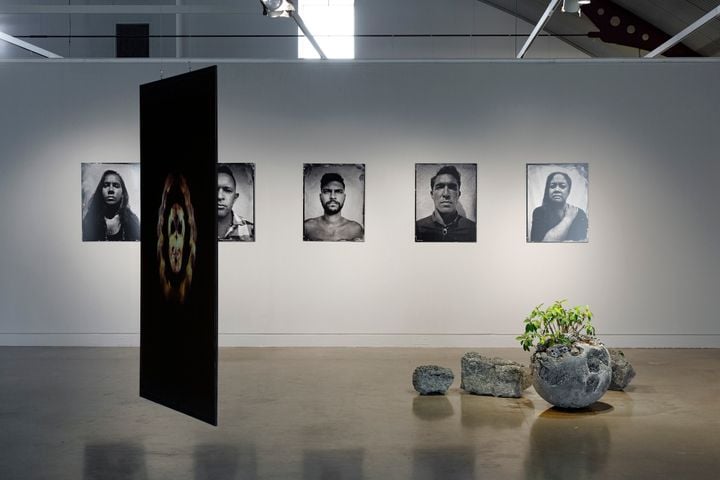Including works by Yuki Kihara, Oliver Laric, and the Guerrilla Girlsamong others, Oh, Museum at Cement Fondu in Sydney (22 May–11 July 2021) examines complex questions around representation and authenticity.
Claiming to 'turn a spotlight on the somber grandiosity, assumed authority and monolithic narratives traditionally upheld by Western museums and art institutions,' the exhibition exemplifies the debate around cultural preservation and the ways digitisation impacts the legitimation of knowledge distribution.
It's a contemplative space, theatrical in tonality with a melancholy vocabulary. Through a process of cultural mimesis and by re-staging ancient artefacts into synthetic imitations, works reconstitute the deployment of history and agency, and investigate the making of knowledge production in the process.
Australian artist James Tylor's tintype 'Critical Indigenous Photographic Exchange' (CIPX) series, attempts to address these questions by visually resurrecting the representation of Indigenous cultures formerly depicted by European anthropologists during the 18th and 19th century. This time with leading Indigenous curators, arts workers, and artists, such as Coby Edgar (Larrakia & Jingili peoples), Tina Baum (Larrakia, Wardaman & Karajarri peoples), and Dean Cross (Worimi people).
Here, Tylor intensifies the efficacy of deconstructing a sense of historical permanence to re-claim a future history in what is a poetic resurrection: of the destruction of cultural memory reconfigured into new symbolic resonance.
In its engagement with the museum's role as an authenticating body of knowledge and the role of new technologies to either demystify or reclaim its narratives, Oh, Museum embodies a powerful paradox. It presents a multi-layered critique of museological processes, institutional pedagogy and promotes regeneration while addressing the under-representation of Indigenous cultures. But it also liberates the art museum of a certain accountability by illustrating that these unresolved issues are, effectively, precariously embedded in the ontological view surrounding authentication, authorship, and the colonisation of information and representation.
Whether through repetition, imitation, or mimesis, the performance of knowledge seems, more so, a reenactment of history in the present.


